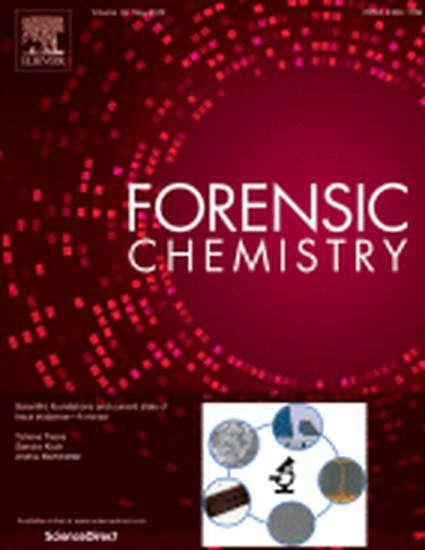
Article
The volatile organic compound profile from Cimex lectularius in relation to bed bug detection canines
Forensic Chemistry
(2020)
Abstract
Cimex lectularius are parasitic insects that feed on blood from a human host and are found in homes, hotels, libraries, and airports. Their behavior makes them difficult to prevent, detect, and/or treat. As well as traps and monitors, bed bug detection canines are routinely used to locate C. lectularius infestations. The role of the bed bug detector canines team has recently expanded as a potential forensic tool due to the ability to isolate human DNA from bed bugs up to three days after taking a blood meal. The effectiveness of the detector canine is in part dependent on access to target odor and for handlers understanding how to maximize target odor exposure. Little is known about the volatile organic compounds (VOCs) emitted by C. lectularius. In this study, different stages of C. lectularius were analyzed, including eggs, live adults, eggs and live adults combined, dead adults, and shed casings. VOC sampling using headspace solid-phase microextraction arrow (SPME Arrow) was performed and samples were analyzed by gas chromatography – mass spectrometry (GC–MS). The samples each had varying VOC profiles. Live and dead adult samples gave diverging profiles, providing a foundation for the success of bed bug detection canines in live targets. All samples containing eggs had the most dissimilar VOC profile. A slight increase in total VOCs was observed with increased insects present, but only after removal of volatile pheromone components. The identification of VOCs emitted by C. lectularius may help as scientific foundation to guide the development of detection canine training and certification.
Disciplines
Publication Date
May, 2020
DOI
https://doi.org/10.1016/j.forc.2020.100214
Citation Information
Catherine Cannon, Susan Stejskal and Katelynn Perrault. "The volatile organic compound profile from Cimex lectularius in relation to bed bug detection canines" Forensic Chemistry Vol. 18 (2020) Available at: http://works.bepress.com/katelynn-perrault-uptmor/9/
